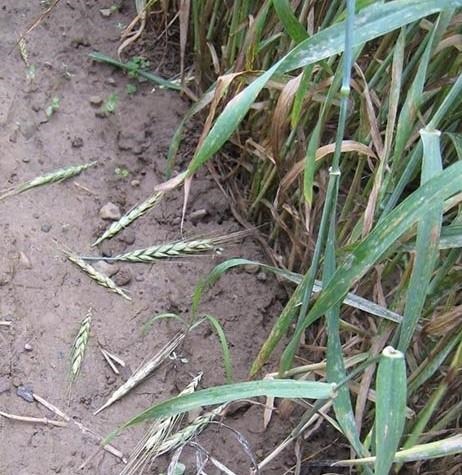By John Tooker
True armyworm is a pest that migrates from south states every spring, and in some years the pest populations we receive can be large. Fortunately, this does not seem to be one of those years, but armyworm caterpillars have arrived and their damage can be found in some fields. Scouting the last two weeks in Centre County, I found their damage on V3-V5-stage corn plants, and in some of the older plants caterpillars were clearly evident occupying the whorls. Beyond corn, true armyworm can be a pest of wheat and hay. Their populations can be very patchy, so I encourage growers to scout their corn, wheat, and hay fields for armyworm damage. For corn growers, armyworm is more common following grass cover crops, but they can show up in other situations, including in alfalfa.
True armyworm damage to corn begins from the edge of the leaves, and often looks ragged with large pieces of tissue removed, but armyworms rarely consume the midrib (Figure 1). In heavy damage, little more than the midrib of corn leaves can be left. Armyworms feed at night and during the day in corn hide in the whorl, where their brown, wet, mushy frass (the word for insect feces) accumulates. The great majority of feeding damage occurs when the larvae are nearly mature, which accounts for much of the damage seemingly appearing overnight. In wheat, armyworms will first feed on leaves and then progress upward to the head, which they can clip off as they try to get enough food. During the day, they hide at the base of plants. Clipped heads on the plant or the ground (Figure 2) are good signs of their presence.
